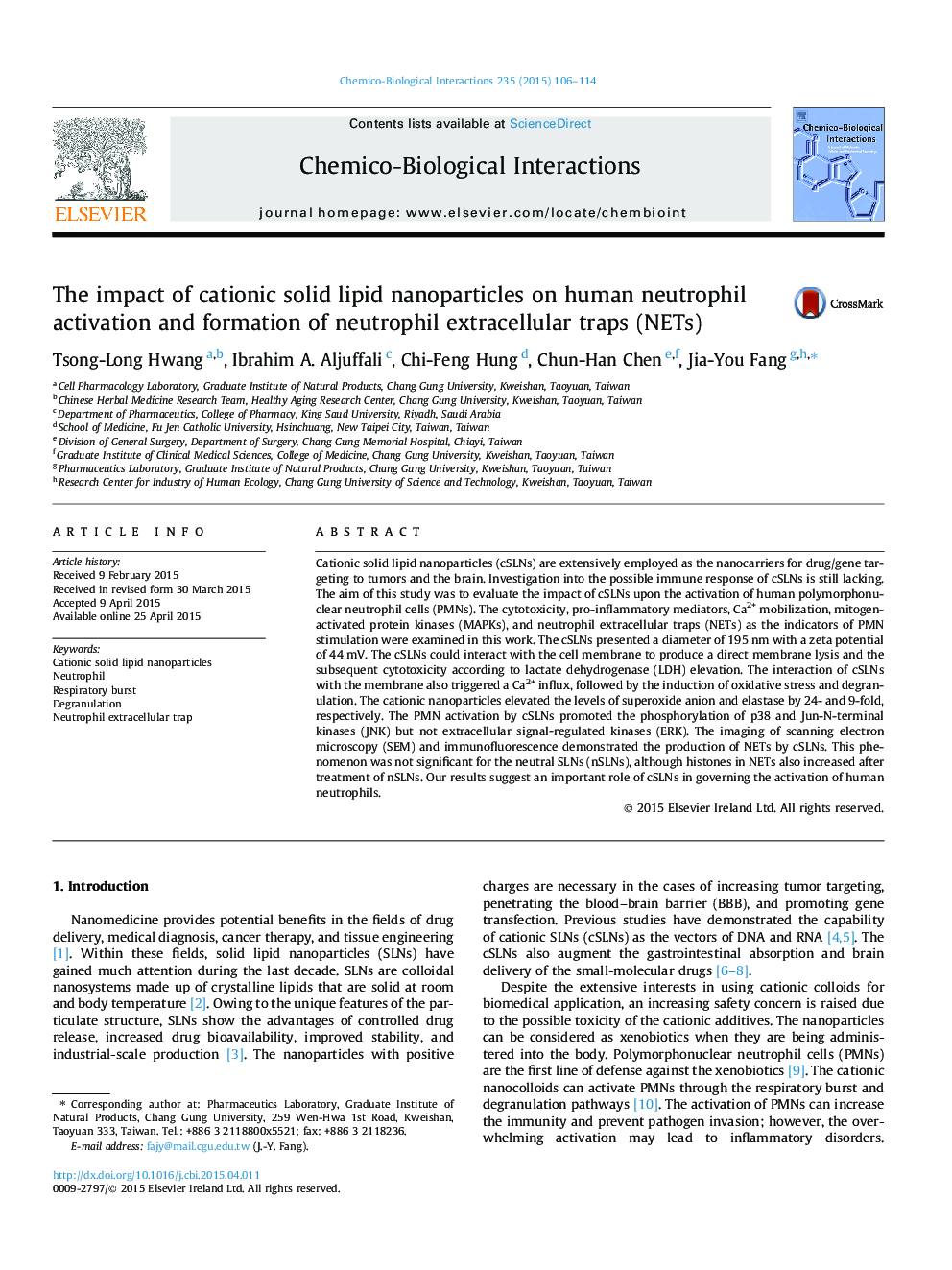| کد مقاله | کد نشریه | سال انتشار | مقاله انگلیسی | نسخه تمام متن |
|---|---|---|---|---|
| 2580150 | 1561606 | 2015 | 9 صفحه PDF | دانلود رایگان |
• Cationic solid lipid nanoparticles showed a striking activation effect on neutrophils.
• Cationic solid lipid nanoparticles increased respiratory burst and degranulation.
• Phosphorylation of p38 and JNK involved in the neutrophil activation by cationic nanoparticles.
• The cationic nanoparticles produced neutrophil extracellular traps within minutes.
Cationic solid lipid nanoparticles (cSLNs) are extensively employed as the nanocarriers for drug/gene targeting to tumors and the brain. Investigation into the possible immune response of cSLNs is still lacking. The aim of this study was to evaluate the impact of cSLNs upon the activation of human polymorphonuclear neutrophil cells (PMNs). The cytotoxicity, pro-inflammatory mediators, Ca2+ mobilization, mitogen-activated protein kinases (MAPKs), and neutrophil extracellular traps (NETs) as the indicators of PMN stimulation were examined in this work. The cSLNs presented a diameter of 195 nm with a zeta potential of 44 mV. The cSLNs could interact with the cell membrane to produce a direct membrane lysis and the subsequent cytotoxicity according to lactate dehydrogenase (LDH) elevation. The interaction of cSLNs with the membrane also triggered a Ca2+ influx, followed by the induction of oxidative stress and degranulation. The cationic nanoparticles elevated the levels of superoxide anion and elastase by 24- and 9-fold, respectively. The PMN activation by cSLNs promoted the phosphorylation of p38 and Jun-N-terminal kinases (JNK) but not extracellular signal-regulated kinases (ERK). The imaging of scanning electron microscopy (SEM) and immunofluorescence demonstrated the production of NETs by cSLNs. This phenomenon was not significant for the neutral SLNs (nSLNs), although histones in NETs also increased after treatment of nSLNs. Our results suggest an important role of cSLNs in governing the activation of human neutrophils.
Journal: Chemico-Biological Interactions - Volume 235, 25 June 2015, Pages 106–114
